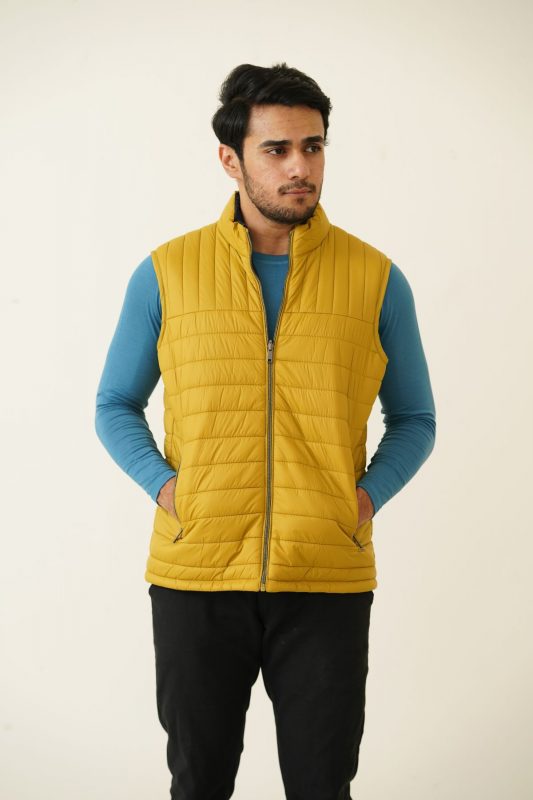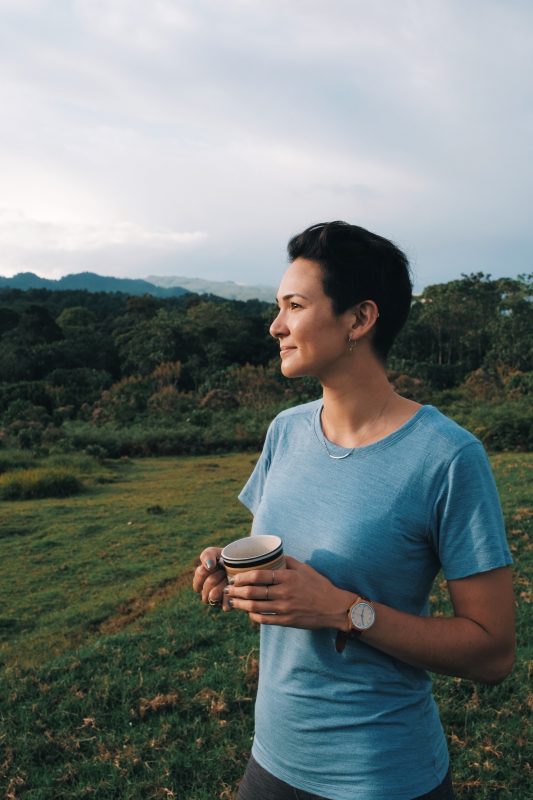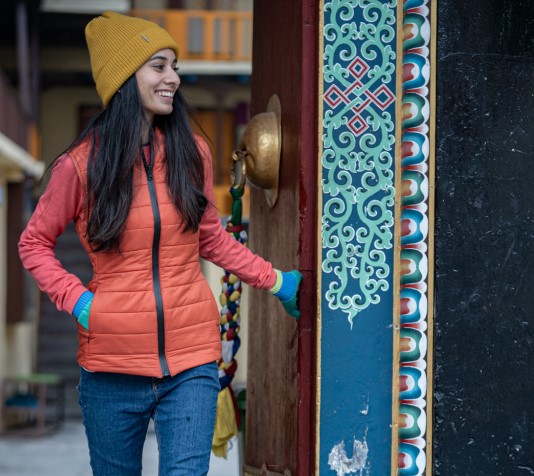
Summer time is usually the time of year when students have to make final decisions about their study abroad plans. However, if you’re planning on studying abroad in winter, you may be wondering what should you wear? The answer depends on where your destination is located. For example, if you’re studying in winter wonderland London, Europe, the weather may be quite different than that of North America or Asia. The following article will provide some ideas for various destinations and tips for staying warm during the winter months in each destination.
This year, your winter season is upon us and it’s time to start planning for the upcoming snowstorms and freezing temperatures. Studying abroad can be an incredibly rewarding and life-changing experience. But there are a few important things to consider when choosing your clothing as per your study destination.
Table of Contents
Why It’s Important to Dress Appropriately for Students Studying Abroad During Winter?
You will be spending most of your time in your host country, so dressing appropriately is essential. It’s important to note that different countries have different winter weather, and dressing accordingly will help you stay warm and comfortable. For example, if you plan on studying in Europe, North America, or Asia, you should dress accordingly for those areas’ climate conditions.
In Europe, you’ll want to pack warm clothes, including thermals, sweaters, coats, and thick socks that keep you warm even if it gets below freezing outside. On the other hand, if you plan on going somewhere like Oceania (Australia or New Zealand), you’ll want lightweight clothing that can keep you cool when it gets hot outside or when snowfall is happening.
If you are an Indian student studying abroad, you will experience different weather conditions that you may not have been accustomed to in India. Therefore, when packing for study abroad in wintertime, one of the best ways to stay warm without having too much stuff is by layering your clothing correctly.
Layering means wearing two or more layers of different fabrics together to absorb the heat from your body and keep it from escaping through the material underneath. To know more about layering, check out winter layering tips here.
Different Study Abroad Destinations Covered in the Article
This article covers various study-abroad destinations, and each destination experiences different winter weather conditions, which means that the appropriate winter wear will vary.
-
Europe
-
-
London
-
Paris
-
Berlin
-
Scotland
-
Sweden
-
-
North America
-
New York
-
Chicago
-
Toronto
-
Vancouver
-
Montreal
-
-
Asia
-
-
Tokyo
-
Seoul
-
Beijing
-
Singapore
-
Hong Kong
-
-
Oceania
-
-
Sydney
-
Melbourne
-
Auckland
-
Factors to Consider When Choosing Winter Wear for Study Abroad:
-
Temperature:
Different countries have different temperature ranges during winter, and you, as a student studying abroad, will need to choose clothing that can keep you warm in those conditions. For example, if you’re studying in Canada or the northern United States, you’ll need clothing that can handle sub-zero temperatures.
If possible, bring items from home that will allow you to mix and match different layers easily. This way, it makes your travel sustainable, and you won’t have to spend a lot of money on buying new clothes while abroad; instead, you can add them as needed. This is especially important if you’re going somewhere like Europe or North America with colder temperatures than the summer months.
-
Windchill:
Windchill can make the temperature feel much colder than it actually is. Windchill is especially important to consider if you’re studying abroad in a place with high winds or open spaces. In these conditions, you’ll need to select clothing that can protect you from the wind, such as a windbreaker, cap or a heavy coat.
For example: the winter wonderland London is known for being a windy city, particularly in winter when the winds can be stronger, which can enhance the effect of cold temperatures on the body.
-
Precipitation:
It includes snow, rain, or sleet. If you are studying in a place with a lot of snow, you’ll need waterproof and insulated clothing to keep you dry and warm. On the other hand, if you are studying in a place with a lot of rain, you’ll need a raincoat to keep you dry.
-
Time spent Outdoors:
The duration of your exposure to the elements plays a crucial role in deciding the appropriate winter wear for yourself. If you are spending long periods of time outside, you will need to choose clothing that can keep you warm and dry for extended periods.
Tips for how to layer clothing effectively to stay warm:
The best way to stay warm when students are studying abroad is by wearing layers. You can wear several layers of clothing at once, but it’s important to know your body type and what types of clothing work for you before packing for a destination.
Visit Kosha for all your winter wear needs
-
Choose moisture locking base layer
Choose a base layer that will keep your body warm while still allowing you to move comfortably. Usually, a thermal made with Merino & Bamboo fibre is a good choice as it protects your body from extreme temperatures and looks like a t-shirt which you can pair with your jeans and complete your winter look. You should also layer over this piece with another one made from a thicker fabric (e.g., fleece) that can keep you extra warm on particularly cold days.
The key is to start with a base layer that is made of moisture-wicking fabric that dries quickly because you don’t want to start sweating and end up having a wet thermal layer, such as merino wool or natural fibres, instead of synthetic fabrics like polyester. This layer will help keep sweat away from your skin, keeping you dry and warm.
Need help finding the best place to buy winter wear made with natural fibres? Visit Kosha, your winter layering expert!
-
Trap heat with Mid Layer
The next layer should be insulating, such as a sweater or fleece jacket. These materials are great at trapping heat close to your body, keeping you warm and cosy. You can choose to add an additional mid-layer for extra warmth if needed. This will help prevent overheating while still allowing you a full range of motion and comfortability while walking around campus/town/city.
-
Choose wind or waterproof outer layer
Finally, add an outer layer that is windproof and waterproof, such as a winter trench coat. This layer will protect you from wind chill and precipitation and should be chosen based on the severity of the weather conditions. Choose a coat that is long enough to cover your torso and hips and has a hood to protect your head.
To know more about winter layering tips for staying warm and how to choose the right fabric for each layer check out this guide on winter layering.
Winter Wear for Students Studying Abroad in Europe
Europe is a great place for students to study abroad because many countries offer English as a second language (EFL) programs and exchange programs with other European countries. The weather can vary greatly depending on where you live, so it’s important to remember this when choosing what clothes to bring. If possible, try to pick up some winter clothes before leaving home so they can get used by the time you arrive at school or the hostel!
For example, London is also known as the winter wonderland of Europe, as the temperatures here may be mild one day and freezing the next. And even when it’s not freezing outside, wind chill can make it feel like it is.
Whether you’re planning a short-term trip or an extended stay abroad, there are some things you should keep in mind when choosing your winter wear. Here are some suggestions for appropriate winter clothing for popular European study-abroad destinations:

Testimonial for the student studying abroad
Winter Wonderland London:
London is one of Europe’s most popular study-abroad destinations, with universities such as University College London and King’s College London attracting students from around the world. Winter weather in London is no less than any wonderland; hence, it is often known as winter wonderland London. It is characterized by cold temperatures and frequent rain, with average temperatures ranging from 2-8°C (35-46°F) from December to February. This means you’ll need to pack good quality thermals made with natural fibres like Merino wool & Bamboo, which keep you warm below 10°C and are lightweight. Waterproof shoes are also a must-have, as London can be quite rainy during the winter.
Paris:
Paris is another popular study-abroad destination, with universities such as Sorbonne University and Sciences Po attracting many international students. Paris in the winter can be quite cold, with temperatures ranging from 1°C to 7°C (34°F to 45°F), with occasional snowfall. A warm trench coat, gloves, and hat are essential; students should also consider waterproof boots for navigating the often wet streets.
Berlin:
Berlin is a popular destination for students looking to study in Germany, with universities such as Humboldt University and the Free University of Berlin attracting students from around the world. Winter temperatures in Berlin can dip below freezing, with average temperatures ranging from -2-3°C (28-37°F). To stay warm and dry, don’t forget to pack a Parka Jacket, waterproof boots with good traction for icy sidewalks, a scarf, hat, and gloves. It’s also a good idea to pack thermal underwear and warm socks, as the cold weather can be quite harsh.
If you plan to study in Edinburgh, Scotland, you’ll need to be prepared for cold temperatures and frequent snowfall. The University of Edinburgh is a popular choice for international students, with winter temperatures averaging around 2-6°C (35-43°F) and snowfall occurring throughout the season.
In Stockholm, Sweden, winter temperatures can drop as low as -15°C (5°F), with snowfall occurring throughout the season. The University of Stockholm is a popular destination for international students, and it’s important to pack appropriately for the cold weather. Thermal underwear, warm socks, and insulated pants and jackets are a good idea to carry in your packing list.
If you are planning to study in these locations, check out the article on Packing Tips For Students Going Europe first time.
Winter Wear for Students Studying Abroad in North America
Studying abroad in North America during the winter months can be an exciting and memorable experience, but the weather can be quite harsh in certain cities. Let’s take a closer look at the winter weather conditions and appropriate winter clothing for popular North American study-abroad destinations, including the universities that attract the maximum number of students from abroad.
Favorite puffer jacket for boys studying abroad
New York:
New York City is one of the most popular study-abroad destinations in North America, with universities such as Columbia University and New York University attracting students from around the world. However, New York winters can be cold, with temperatures ranging from -3°C to 4°C (27°F to 39°F), along with strong winds and the occasional snowfall.
The lowest temperature in New York City during winter can reach as low as -18°C (0°F), so it’s important to dress appropriately to stay warm and comfortable. Instead of packing plenty of warm layers, focus on packing good quality thermals that can keep you warm with just 3-4 layers of clothing, including a trench coat, thermal underwear, waterproof boots, a scarf, a hat, and gloves. A stylish reversible waterproof jacket is also recommended, protecting you from rain and windchill.
Chicago:
Chicago is another popular study-abroad destination, with universities such as the University of Chicago and Northwestern University attracting many international students. Winter temperatures in Chicago can be particularly harsh, with average temperatures ranging from -4-2°C (25-35°F) from December to February. To stay warm and comfortable, layering is key in Chicago, as you may need to remove or add layers throughout the day, depending on the temperature. Still, need help? Click here to read more on What To Wear In Chicago In Winter
Toronto:
Toronto winters can be very cold, with temperatures ranging from -10°C to -2°C (14°F to 28°F). Toronto is a popular destination for students looking to study in Canada, with universities such as the University of Toronto and Ryerson University attracting students from around the world. Winter temperatures in Toronto can range from -10-0°C (14-32°F) from December to February, with occasional snowfall. A warm coat, hat, gloves, scarf, and waterproof boots are essential. Layers are important, as buildings tend to be heated indoors. A Parka jacket is also recommended for particularly cold days.
Vancouver:
Vancouver is another popular study-abroad destination in Canada, with universities such as the University of British Columbia and Simon Fraser University attracting many international students. Winter temperatures in Vancouver are milder than other cities on this list, with average temperatures ranging from 1-8°C (33-46°F) from December to February. A waterproof Puffer jacket, hat, and gloves are essential, as rain is common. Waterproof boots are also important for navigating wet streets.
Montreal:
Montreal is a popular destination for students looking to study in Quebec, Canada, with universities such as McGill University and Concordia University attracting students from around the world. Winter temperatures in Montreal can be particularly harsh, with average temperatures ranging from -10–4°C (14-25°F) from December to February. To stay warm and comfortable, pack a heavy coat, waterproof boots, thermal underwear, a scarf, a hat, and gloves. A down jacket is also recommended for particularly cold days.
If you are planning to study in these locations, check out packing tips for winter wear to stay warm in USA.
Winter Wear for Students Studying Abroad in Asia
Asia is a popular study-abroad destination, But when it comes to winter, it’s important to come prepared with the appropriate winter clothing. Let’s take a closer look at the winter weather conditions and appropriate winter clothing for popular Asian study-abroad destinations, including the universities that attract the maximum number of students from abroad.
Tokyo:
Tokyo’s winters can be cold, with temperatures ranging from 1°C to 10°C (34°F to 50°F) from December to February, with occasional snowfall. A warm trench coat, thermals, ear covering pure merino wool caps, gloves, and scarf are essential items on your packing list. Students should also consider waterproof boots, as they can be wet and snowy. Tokyo, Japan, is a popular destination for students studying abroad in Asia, with universities such as the University of Tokyo and Waseda University attracting students from around the world.
Seoul:
Seoul, South Korea, is another popular study-abroad destination, with universities such as Seoul National University and Korea University attracting many international students. Seoul’s winters can be very cold, with average temperatures ranging from -6-2°C (21-35°F) from December to February. Pack a heavy coat, waterproof boots, thermal underwear, a hat, and gloves to stay warm and comfortable. A Parka or Puffer jacket is also recommended for particularly cold days.
Beijing:
Beijing, China, is a popular destination for students looking to study in China, with universities such as Tsinghua University and Peking University attracting students from around the world. Winter temperatures in Beijing can be quite harsh, with average temperatures ranging from -10-0°C (14-32°F) from December to February. Students should also consider wearing warm winter layers like sweaters and insulated boots for warmth, along with thermal underwear, a scarf, hat, and gloves.
Singapore:
Singapore, while not known for its winter weather, is still a popular destination for students looking to study in Asia, with universities such as the National University of Singapore and Nanyang Technological University attracting many international students. Winter temperatures in Singapore are mild, with average temperatures ranging from 23-26°C (73-79°F) from December to February. However, it can still feel cooler than expected for those used to warmer climates. Therefore it’s better to carry lightweight layers, such as long-sleeved shirts, light jackets, and light rain jackets, as Singapore can experience occasional rainfall during the winter months.
Hong Kong:
Hong Kong is another popular study-abroad destination in Asia, with universities such as the University of Hong Kong and Hong Kong University of Science and Technology attracting many international students. Winter temperatures in Hong Kong can be mild, with average temperatures ranging from 15-20°C (59-68°F) from December to February. Pack lightweight layers like long-sleeved shirts and light jackets to stay comfortable. It’s also a good idea to bring a light rain jacket, as Hong Kong can experience occasional rainfall during winter.
Winter Wear for Students Studying Abroad in Oceania
When planning to study abroad in Oceania, it’s important to remember that the winter season here occurs during the months of June to August, which can be quite different from what you’re used to if you belong to India. The weather conditions can vary greatly across popular study-abroad destinations in Oceania, so it’s important to do some research beforehand and plan accordingly. Let’s take a look at some suggestions for appropriate winter clothing for popular Oceania study-abroad destinations:
Sydney:
Sydney, the largest city in Australia, attracts many international students each year. Some of the popular universities in Sydney include the University of Sydney, the University of Technology Sydney (UTS), and the University of New South Wales (UNSW).
Winter in Sydney occurs from June to August and is characterized by mild temperatures ranging from 8-17°C (46-63°F). However, it can still get quite chilly, especially at night, so it’s important to pack warm layers like thermals. A good quality waterproof jacket or coat is also recommended, as rain can occur throughout winter. Waterproof shoes or boots are also important for navigating wet streets.
Melbourne:
Melbourne is another popular study-abroad destination in Australia, with universities such as the University of Melbourne and Monash University attracting international students. Since Melbourne is located in the southern part of Australia, it experiences much cooler winter temperatures compared to Sydney.
Temperatures range from 6-14°C (43-57°F) and can drop to 0°C (32°F) at night. The city is known for its unpredictable weather, with rain, wind, and occasional snow possible during winter. Due to the cooler temperatures, it’s important to bring a warm cotton pullover, gloves, hat, and scarf. Students should also consider waterproof boots for the often wet and rainy streets of Melbourne.
Auckland:
Auckland is the largest city in New Zealand and home to popular universities like the University of Auckland, Auckland University of Technology (AUT), and Massey University. Temperatures here range from 8-15°C (46-59°F), and it is often windy and rainy. A warm waterproof jacket, hat, and gloves are essential, as rain is common. Students should also consider wearing layers and waterproof shoes or boots for warmth and protection from the rain.
When packing for winter in Oceania, it’s important to consider the type of activities you will be doing. For example, if you plan on skiing or snowboarding, you will need to pack additional items such as a snow jacket, snow pants, and warm boots. Packaging thermal underwear, warm socks, and insulated pants and jackets is also recommended to stay warm and comfortable during outdoor activities.
In addition to packing appropriate clothing, it’s also a good idea to research the climate and weather patterns of your study abroad destination before you arrive. This can help you prepare mentally for the weather conditions and pack the appropriate gear.
FAQs
-
Can I purchase winter clothing locally or should I bring everything from home?
This will depend on your destination and your personal preferences. In some countries, you may find a wide variety of winter clothing options available in local stores. However, if you have specific needs or preferences or are traveling to a remote area, you may want to bring everything you need from home. Additionally, keep in mind that purchasing clothing abroad can be more expensive than buying it at home, so you may want to factor that into your decision. It’s best to research beforehand and bring essential items from the home to ensure you’re prepared.
-
Will I need to pack any specific fabrics or materials to stay warm?
Fabrics like wool, fleece, and Supima cotton are great for staying warm in cold weather, as they are breathable and insulating. Be sure to check the weather forecast for your destination and plan accordingly. And avoid regular cotton as it absorbs moisture and can make you feel colder.
-
Should I plan to layer my clothing or will a few warm pieces suffice?
Layering is generally a good idea for winter travel, as it allows you to adjust your clothing based on the temperature and activity level. Consider bringing a limited number of good quality items, such as thermal tshirts, sweaters, warm trench coat, and some accessories that makes your travel light and enjoyable. It’s also a good idea to focus on bring quality winter wear that can be worn in layers, so you can easily remove or add layers as needed without taking up too much space in your luggage.
-
Are there any specific items I should consider bringing that might not be readily available at the destination?
Depending on your destination, some items may be harder to find locally or more expensive to purchase abroad. For example, thermal underwear, warm socks, and hand warmers might not be readily available in some destinations, so it’s best to pack these items from home. If you have specific brand preferences or sizing needs, bringing those items from home may be wise rather than relying on finding them in local stores. You can also check out the Kosha store for the best quality winter wear in your packing list for studying abroad.
Conclusion:
In conclusion, students studying abroad during the winter months can have a great experience, but it’s important to come prepared with the right clothing to stay warm and comfortable. Each city has its own unique weather conditions, so it’s important to research your destination and pack accordingly. With the right clothing and accessories, you’ll be able to enjoy your study abroad experience to the fullest.







